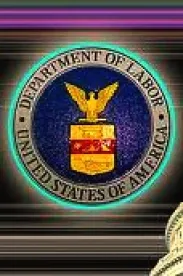Proposal would require certain service providers to furnish a separate disclosure guide.
On March 11, the U.S. Department of Labor (DOL) issued a proposed amendment to its 2012 final regulations under section 408(b)(2) of the Employee Retirement Income Security Act of 1974 (ERISA), which require certain service providers to pension plans to disclose information about their services and compensation to plan fiduciaries.[1] The proposed amendment would require these service providers to furnish plan fiduciaries with a guide if the disclosures are contained in multiple or “lengthy” documents. The DOL has requested comments on the proposal by June 10, 2014. Service providers should consider reviewing their current fee disclosures to determine whether any changes would be required should the proposed rule be finalized and should consider whether to provide any comments on the proposal to the DOL.
Background
Effective July 1, 2012, the final regulations required certain service providers to employer-sponsored retirement plans—including fiduciaries, investment advisers, recordkeepers, broker-dealers, consultants, and certain others identified in the rule—to disclose information to plan fiduciaries regarding their services, statuses as fiduciaries or registered investment advisers, direct compensation received from the plans, indirect compensation received from third-parties in connection with their services to the plans, and certain other information regarding their services and compensation arrangements. These disclosures were intended to ensure that plan fiduciaries receive and evaluate information needed to assess the reasonableness of compensation paid for services to a plan and to verify compliance with a condition that must be satisfied to qualify for relief under the ERISA section 408(b)(2) prohibited transaction exemption for reasonable arrangements for services.
The final rule did not require service providers to furnish information in any particular format and generally permitted service providers to use multiple documents from various sources to disclose the required information. As such, many service providers used various documents, such as client agreements, Form ADV Part 2, offering memoranda, and prospectuses, to fulfill their disclosure obligations. Though the final rule did not require a guide or other summary disclosure, the DOL provided a sample guide that could be used as part of a service provider’s disclosures[2] and requested comment on the issue.
Proposed Amendment
The proposed amendment would require service providers that use multiple or “lengthy” documents to satisfy the disclosure requirements to furnish a guide that identifies the documents and a “page or other sufficiently specific locator, such as a section,” to help the plan fiduciary “quickly and easily” find each item of information required to be disclosed under the service provider fee disclosure regulations. Questions open for comment include how many pages a document must be to be considered “lengthy” under the rule and whether other standards should apply.
The guide, which the proposal would require to be furnished in a separate document, would include references to the following items (tracking the categories in the sample guide published with the final regulations):
-
The description of services to be provided.
-
A statement regarding whether services are provided as a fiduciary or registered investment adviser.
-
Descriptions of direct and indirect compensation to be received in connection with the services.
-
Descriptions of compensation that will be paid among related parties for termination of the contract or arrangement and for recordkeeping services.
-
Disclosures of investment-related information for fiduciary services to plan assets entities and recordkeeping and brokerage services to individual account plans that make designated investment options available through the service provider’s platform. This includes compensation charged directly against the investment and annual operating expenses, ongoing expenses, or, if applicable, total annual operating expenses.
The guide would also be required to identify “a person or office, including contact information” that plan fiduciaries may contact regarding the disclosures. Finally, under the proposal amendment, any changes to the guide would need to be provided at least annually.
The DOL proposes that the amendment would take effect 12 months after the publication of a final amendment in the Federal Register, but it has invited comments on the proposed effective date.
Focus Group Testing
In connection with the proposed disclosure guide, the DOL announced that it intends to conduct focus group sessions with fiduciaries to small pension plans to “explore current practices and effects” of the service provider fee disclosure regulation. The DOL indicated that the focus groups “may provide information about the need for a guide, summary, or similar tool to help responsible plan fiduciaries navigate and understand the required disclosures.”
Request for Comments
In addition to requesting comments regarding the page limit that would trigger the requirement to furnish the guide and the effective date of the final rule, the DOL has specifically requested comments that address, among other things, the following:
-
The regulatory alternatives discussed in the Regulatory Impact Analysis that the DOL considered in developing the proposal, including maintaining the status quo, mandating a summary of the required disclosures (an approach the DOL rejected on the basis that plan fiduciaries might read only the summary and not the full disclosure), or granting an exemption for particular service providers if producing the guide would be impossible or unreasonably burdensome
-
Whether the rule should permit service providers to choose between page numbers and other locators, such as section references, or should mandate one or the other and why
-
Whether the separate document requirement is likely to ensure that plan fiduciaries understand the existence and purpose of the guide or whether the rule should also mandate specific introductory language
-
The structure of the guide as proposed, including whether its requirements are feasible and cost effective
-
How many and what types of products and services will require a guide
-
Cost estimates, including a breakdown of the costs into their constituent elements when possible
-
Whether the amendment should instead require a summary of specified “key” disclosures; if so, what “key” information should be included; and other considerations related to providing a summary
Observations
Providing the initial disclosures by July 1, 2012 proved to be a costly and labor-intensive undertaking. A significant concern about the current proposal is whether it would require repapering all of the prior disclosures. However, it is unclear from the proposal whether, once finalized, the rule would require that covered service providers furnish the guide to existing plan clients or only when entering into new arrangements for services. Even if service providers are not required to furnish existing clients with a guide right away, they may be required to provide one to existing clients under the annual update requirement. This issue may need to be clarified as well.
Apart from the repapering issue, another key issue will be the criteria for when a guide is required. Many of the disclosures furnished in 2012 were lengthy as a result of the complexity of services that many firms provide to plans and the types of compensation they receive. Still, to the extent that disclosures are organized along the general lines described in the DOL proposal (e.g., by using separate sections for “direct” and “indirect” compensation), an additional guide would not seem necessary.
An additional issue that may need further clarification is the proposal’s requirement that the guide be furnished as a separate document. The DOL noted in the proposal’s preamble that this is to ensure that the guide is “brought to the attention” of the plan fiduciary and “prominently featured.” In practice, many service providers have included their disclosures as separate schedules to other documents, such as client agreements and offering memoranda. It is unclear whether this practice would be permitted under the current proposal’s separate document requirement.
Another key issue will be the content of the guide. A concern was that the DOL would require that the guide reference specific page numbers in documents, but the DOL, acknowledging comments on that issue, has adopted a more flexible approach. Still, the proposal emphasizes that the references must use a “sufficiently specific locater,” so that disclosure formats that used the sample guide from the final regulation as a model will have to be reviewed with this consideration in mind. Further, the DOL has requested comments on whether service providers should be able to choose between page numbers and other locators or should be required to use one or the other of the methods, and thus this requirement could change in the final regulation.
In sum, service providers subject to these disclosure rules will want to review the new proposal in light of their previously furnished 408(b)(2) disclosures. Service providers should also take advantage of the comment period to raise with the DOL any issues that require clarification or to address the specific comment requests from the DOL, including cost estimates.[3]
[1]. Amendment Relating to Reasonable Contract or Arrangement Under Section 408(b)(2), 79 Fed. Reg. 13,949 (proposed Mar. 12, 2014) (to be codified at 29 C.F.R. pt. 2550), available here.
[2]. View the sample guide here.
[3]. For more information on the ERISA section 408(b)(2) fee disclosure regulations, see our previous LawFlashes: “Final DOL 408(b)(2) Disclosure Regulation,” available here; “DOL Releases Final 408(b)(2) Disclosure Regulation,” available here; “Service Providers to ERISA Plans: DOL’s New Disclosure Regulations Are Imminent—Are You Ready?,” available here; and “DOL Publishes Interim Final ERISA Regulation on Service Provider Disclosure Obligations,” available here.





 />i
/>i
